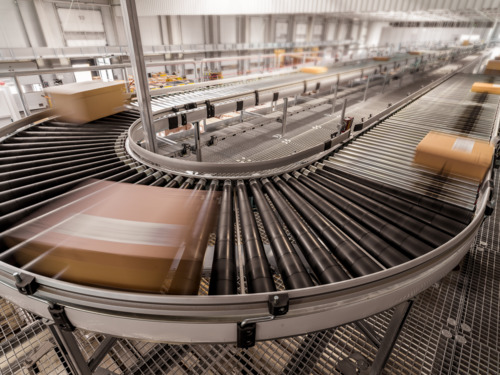Climate technology manufacturer Walter Meier opens new energy-efficient intralogistics facility with automated TGW systems
A new, $48 million (US) national logistics hub for HVAC and facilities expert Walter Meier Klima Schweiz AG, located in Nebikon, Switzerland, consolidated multiple manual distribution centers into a single, highly-automated and sustainable operation.
In 2007, three companies—Oertli, Vescal and Axair Kobra—merged into Walter Meier Klima Schweiz AG. In doing so, the new company brought together 2 million items across 30,000 stock keeping units (SKUs), housed in six separate manual warehouses (in Bern, Kestenholz, Oberbüren, Romont, Schwerzenbach and Vevey). Integrating all that inventory proved to be a huge task that grew even more complicated when coordinating and organizing 110,000 customer deliveries and 30,000 postal packages was factored into the resulting supply chain.
After the relocations and transports between the six individual sites grew increasingly complex and ultimately led to redundant warehousing, the decision was made: a single, consolidated distribution center at a strategic traffic hub was necessary. The company selected a new facility location in Nebikon, designed and implemented with technologies from TGW Logistics Group. The new logistics center went live in November 2016.
Strategic logistics accommodates increasing customer requirements
Working together with TGW as the systems integrator, Walter Meier implemented an extensive material handling solution that optimizes all processes while retaining flexibility to accommodate future operational changes. As Beat Kohler, manager of the new distribution center, explains: "We already operated at full capacity, so the increased customer requirements left no choice but to optimize our processes with automation. By partnering with TGW, we achieved that goal successfully."
The resulting facility structure includes three main parts:
- A rack-supported automatic pallet warehouse with four aisles housing more than 11,000 pallets. With double-deep storage and six tons of load bearing capacity for each shelf—on eight levels—TGW’s pallet automated storage and retrieval system (AS/RS) attains rates up to 39 double cycles per hour.
- An automatic mini-load AS/RS warehouse storing 33,000 totes delivered to goods-to-person picking stations, a re-packing station at the pallet loop, and an order consolidation area with a dispatch zone.
- A manual warehouse with 4,000 storage locations and a shelf rack warehouse with 1,500 storage locations.
"We used our Mustang single-mast storage and retrieval machines (SRM) in the four aisles of the mini-load warehouse, allowing up to 600 totes of small parts to be stored and retrieved per hour. All of our SRMs feature lightweight construction based on aircraft concepts that reduces their weight by 25 percent over competitive models for maximum energy efficiency," says Hanspeter Egli, TGW’s project manager in charge of the Walter Meier facility’s design and implementation.
“Although a shuttle-based system was considered, the use of an anti-pendulum drive to keep the mast stable—even at a height of 39 feet (12 metres)—prompted our choice of an SRM for the mini-load,” adds Matthias Ott, Walter Meier project manager.
State-of-the-art technology emphasizes ergonomics
Ergonomics was another focus of the design of the new automated system, particularly at the point of picking. Recognizing that implementing ergonomic design features allows employees to work more comfortably and achieve higher levels of performance and accuracy, Walter Meier placed an emphasis on selecting those systems.
The installation’s TGW PickCenters are equipped with pick-by-light and overhead PickTerm Tray laser identification. Additionally, employees operate the equipment via touchscreen to eliminate picking errors.
To minimize noise throughout the distribution center, all totes are transported by TGW KingDrive conveyors, which handle loads up to 110 pounds (50 kilograms). Scalable, flexible and extremely quiet, the conveyors are engineered with an energy-saving regenerative braking system and BUS-network communication programming for control of transport speed and acceleration.
Energy self-sufficient logistics center
The emphasis on energy efficiency at the new Walter Meier distribution center didn’t stop with the materials handling systems installed inside. The roof of the facility is home to a 4,200-panel photovoltaic system that achieves peak output performance of 1.1 megawatts. As a result, the site is energy self-sufficient and even exports energy back to the grid.
Walter Meier’s Ott explains: "Paying attention to the energy balance and sustainability was an important point in the planning. Therefore, the building envelope was constructed according to the ‘Minergie’ standard, and the building is equipped with the latest energy-efficient technologies."
“We are happy that we could implement the very energy-efficient logistics concept requested by Walter Meier,” says TGW’s Egli. "The project succeeded thanks to the cooperation of both sides.”

